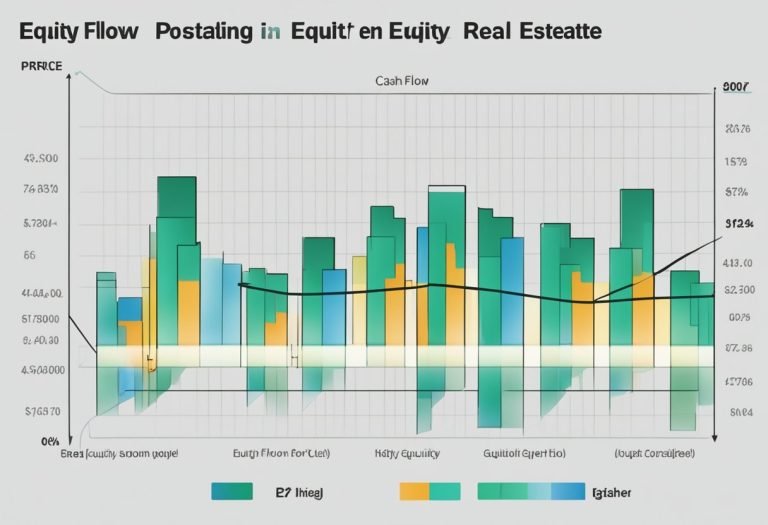Passive Investing in Commercial Multifamily Real Estate
Why Passive Investing in Commercial Multifamily Real Estate?
You’re about to unlock the secrets of passive investing in commercial multifamily real estate. This guide’s designed for you, the keen real estate investor, ready to navigate this lucrative market.
You’ll learn the ins and outs of multifamily syndication, understand how to evaluate properties, and manage your investments.
Don’t worry, you won’t have to quit your day job. Sit back, relax, and let us show you how to become a silent partner in a thriving multifamily real estate investment venture.
Key Takeaways
- Passive real estate investing in multifamily syndications allows busy professionals to generate passive income from real estate without the need for full-time attention and management.
- Multifamily real estate properties tend to be more resilient and exhibit fewer swings in asset values compared to other commercial real estate asset classes.
- The COVID-19 pandemic has highlighted the resilience of multifamily as an asset class, with more robust collections compared to other types of commercial real estate.
- There is a growing demand for rental housing, especially among higher-income earning renters, and the supply of new apartment homes is not keeping up with the demand. This creates opportunities for investors in the multifamily market.
 What is passive investing in commercial multifamily real estate?
What is passive investing in commercial multifamily real estate?
Passive investing in commercial multifamily real estate involves investing in properties such as apartment buildings or complexes without active involvement in day-to-day operations. Investors provide capital and receive a share of the profits, making it a hands-off approach to real estate investment.
Diving into Passive Investing
Let’s explore the world of passive investing in commercial multifamily real estate.
You’ll find the buy and hold strategy can be quite alluring.
And remember, diversification isn’t just a good idea, it’s your best friend in this game.
The allure of the buy and hold strategy
You might be wondering why so many investors are drawn to the buy and hold strategy in passive investing; well, it’s because of the three key benefits: potential for long-term capital appreciation, consistent cash flow, and tax advantages.
With this strategy, you’re not just buying a property; you’re investing in an asset that can provide you with a steady ROI over the years. The buy and hold strategy allows for diversification and better asset allocation in your investment portfolio.
Over time, the value of your property can significantly increase, leading to capital appreciation. Plus, the consistent cash flow from rents can serve as a stable income source.
Not to mention, this strategy also provides tax benefits that can enhance your overall returns.
Why diversification is your best friend
Investing in a single asset class isn’t always a wise move; diversification could significantly enhance your portfolio’s performance and reduce risk. Consider spreading your investments across REITs (real estate investment trusts), private equity funds, and crowdfunding platforms.
Diversifying this way can offer you exposure to different sectors of the real estate market, reducing the impact of market volatility. It also stands as a safety net during economic downturns, with the potential for steady returns even in a bear market.
What is commercial multifamily real estate?
Let’s turn our focus to multifamily properties, including apartment complexes, duplexes, and quadplexes.
You might find these smaller properties to be mighty in their income potential.
Consider the unique benefits they offer in the realm of passive investing.
The charm of apartment complexes
While it may seem daunting at first, delving into the world of apartment complexes, or multifamily properties, can unfold numerous opportunities for passive investing.
These complexes can provide a steady stream of rental income, with the potential for increased earnings as occupancy rates rise. With effective property management, you can ensure that apartment complexes run smoothly, maximizing tenant retention and, consequently, your rental income.
The charm of these properties doesn’t stop there. Consider the impact of renovations and upgrades on property valuation. Even minor improvements can significantly boost the value of the property.
Duplexes and quadplexes: Small but mighty
Diving into smaller multifamily properties like duplexes and quadplexes, you’ll find they pack a powerful punch in the realm of passive investing.
Duplexes and quadplexes are more manageable, reducing property maintenance demands. They also come with lower property taxes, which can significantly increase your profits.
However, be mindful of potential tenant issues, as these smaller properties often attract a diverse array of renters. Still, with proper tenant screening and management, these issues can be mitigated.
Furthermore, the charm of duplexes and quadplexes lies in their scalability. You can start small and gradually build your portfolio, learning as you grow.
Navigating Multifamily Investment Avenues
As you journey through the realm of passive investing in commercial multifamily real estate, it’s crucial to understand the different investment avenues available.
Let’s explore two significant pathways: REITs, where real estate meets the stock market, and Syndication, where resources are pooled for greater gains.
REITs: The stock market meets real estate
Now, let’s explore Real Estate Investment Trusts (REITs), where the world of stock market investing collides with real estate, offering you another avenue for passive investment.
REITs are publicly traded companies that own, operate, or finance income-generating real estate, a fusion of the stock market and real estate. They give you a piece of the real estate market’s potential ups and downs.
One key feature of REITs is their mandate to distribute at least 90% of taxable income as dividend income to shareholders. This can provide a steady income stream. However, as with any investment, risk management is crucial.
Monitoring real estate market trends, understanding the specific REIT’s holdings, and diversifying your portfolio can help mitigate risks.
Syndication: Pooling resources for bigger gains
By pooling your resources with other investors through a process called syndication, you’re able to leverage valuable assets like relationships, software tools, expertise, and time, leading to enhanced investment returns in commercial real estate. This real estate syndication gives you the opportunity for joint ventures with like-minded investors, including individual investors, providing more financing options and opening doors to a good deal of significant equity growth as a limited partner.
You’ll participate in cash flow analysis to ensure the deal’s profitability, allowing you to make informed decisions. It’s like spreading your wings in the vast sky of commercial real estate, with others flying alongside you. It’s a smart move, not only for diversification but also for mitigating risks.
Now, let’s delve into the subsequent section, where we’ll explore financial wisdom for investors.
Financial Wisdom for Investors
Now, let’s turn your attention to the financial wisdom you’ll need as an investor.
Depending on the type of investment, understanding cap rates and return on investment (ROI) is crucial in making informed decisions.
Additionally, the power of leveraging in real estate can significantly boost your profits.
Deciphering cap rates and ROI
Understanding cap rates and return on investment (ROI) is crucial when diving into the world of commercial multifamily investment opportunities.
In simple terms, a cap rate is the ratio of net operating income to property value. It’s a handy metric to assess a property’s profitability before mortgage rates and taxes.
However, don’t fall into the trap of over-leveraging. While a high loan-to-value ratio might seem attractive, it can lead to financial stress if not managed properly.
When it comes to ROI, focus on value-add properties. These are properties that can be improved through strategic renovations, thereby increasing income. By improving the property, you boost your ROI, making your investment even more lucrative.
Understanding these financial concepts can help you maximize your passive investment strategy.
The magic of leveraging in real estate
So, why is leveraging considered magical in real estate investing, you ask?
It allows you to control large, income-generating properties with a fraction of the cost, amplifying your returns. From a long-term perspective, leveraging can skyrocket your investment’s growth potential.
Consider the BRRRR method (Buy, Rehab, Rent, Refinance, Repeat) applied to turnkey properties. Here, leveraging is the superpower that helps you acquire more properties, thereby multiplying your income sources.
Plus, it unlocks the magic of depreciation, a key tax benefit you shouldn’t overlook. The ability to write-off the ‘wear and tear’ of your property each year can help you save significantly on taxes.
Truly, leveraging in real estate is financial wisdom every investor should harness.
The Perks of Going Passive
You might wonder why you should consider going passive in commercial multifamily real estate investing. It’s not just about freeing up time and reducing stress; there are solid financial benefits to reap as well.
Let’s discuss the steady rental income you can enjoy and the often-overlooked advantages of tax breaks and capital appreciation.
Steady rental income: The passive investor’s dream
Steady rental income is your ticket to achieving your dream of passive investment income. Investing in commercial multifamily real estate, like condominiums and triplexes, can provide this steady flow of cash.
Location risks are part of the game, but choosing properties in high-demand areas can help mitigate them. While property management challenges are inevitable, they’re often easier to handle in a multifamily setting rather than single-unit rentals. A reliable property manager can help ensure your property remains profitable and well-maintained.
With a well-selected property and solid management, you can enjoy steady rental income without the typical landlord headaches.
Now, let’s delve into the additional benefits of passive investing: tax breaks and capital appreciation, the unsung heroes of your investment journey.
Tax breaks and capital appreciation: The unsung heroes
Beyond the allure of steady rental income, diving into the world of passive real estate investing also brings with it significant tax advantages and capital appreciation, two often overlooked benefits you’ll definitely appreciate.
Investments like index funds and ETFs pale in comparison when considering the potential tax breaks offered by real estate. Closing costs, often seen as a deterrent, can also be written off, providing further financial incentives.
Not to mention, the value of your investment can grow over time, independent of any environmental concerns or competition that might affect other investment vehicles. Thus, the potential for both tax savings and capital appreciation makes passive investing in commercial multifamily real estate a winning strategy.
Now, let’s tackle overcoming investment hurdles in the next section.
Overcoming Investment Hurdles
Overcoming investment hurdles may seem daunting, but it’s not as tough as you might think.
Whether it’s navigating market volatility or dealing with tenant issues, we’ll discuss some effective solutions that’ll be at your fingertips.
Navigating market volatility with ease
In the world of commercial multifamily real estate investing, you’ll find that navigating market volatility with ease is a crucial skill to develop. It’s essential to understand how zoning regulations, exchanges, and regulatory changes can create unpredictable market shifts.
Off-market deals can be a gold mine, but they also come with their own set of challenges. Having a solid understanding of property insurance is also critical, as unexpected events can drastically affect your investment’s profitability.
Tenant troubles? Effective solutions at your fingertips
During your journey as a passive investor in multifamily real estate, you’ll inevitably encounter tenant issues, but don’t worry – there are effective solutions at your fingertips.
Troubles can range from late payments to property damage. To overcome these, establish clear communication and set firm, fair rules. If rent’s late, be prompt in addressing it. Offer payment plans if necessary.
For property damage, require a reasonable security deposit at move-in. Screening tenants thoroughly can also help avoid issues. Use background checks, credit reports, and rental histories to make informed decisions.
Preparing for the Future
As we shift our focus to preparing for the future, let’s address two key points: market analysis and exit strategies.
Understanding how to predict the next real estate hotspot can significantly impact your investment outcomes.
Equally important is knowing when it’s time to hold onto your investment or when it’s wise to fold.
Market analysis: Predicting the next hotspot
You’ll need to consider several key factors to predict the next real estate hotspots, ensuring your passive investments continue to thrive. Look at demographic trends, population growth, and economic indicators. Pay close attention to areas with increasing job opportunities and a growing populace. These factors, along with market analysis and careful evaluation, can help you make an informed investment decision in commercial multifamily real estate and predict the next hotspot for passive income while minimizing your tax burden.
It’s also crucial to track real estate market cycles. Note areas with emerging developments and potential for growth. Infrastructural improvements, like new roads or amenities, can boost an area’s appeal and property values.
Investing in real estate isn’t just about the present; it’s about anticipating future trends. So stay informed, do your research, and be ready to make strategic moves. Your proactive approach could lead to significant rewards in the long run.
Exit strategies: Knowing when to hold or fold
Having a solid exit strategy is an indispensable part of your investment plan, as it can make a significant difference in your overall return.
Knowing when to hold or fold in commercial multifamily real estate isn’t always easy, but there are signs to watch for. If the market is booming and your property’s value is appreciating, it may be time to sell. Alternatively, if your property isn’t generating the expected cash flow or if maintenance costs are escalating, consider folding and diversifying your investments. When it comes to managing properties, one cost-saving strategy is to consolidate units into one property, such as an apartment building. By doing so, you can often see savings in areas like insurance, repairs, or supplies, making it a wise decision for both investors and property management companies. Understanding the different types of real estate, such as multifamily, can help investors make informed decisions about their exit strategies, including when to hold onto a single property or diversify their portfolio with fractional real estate investments.
Always keep an eye on the market trends and economic factors that can impact your investment. Remember, successful investing isn’t just about buying at the right time, it’s also about exiting at the right time.
Frequently Asked Questions
What Are Some Common Risks Associated With Multifamily Syndication and How Can They Be Mitigated?”
Common risks in multifamily syndication include:
- Market volatility
- Property mismanagement
- Unexpected expenses
To mitigate these risks, it is important to:
- Thoroughly research your market to understand potential fluctuations.
- Choose experienced property managers to ensure efficient operations.
- Plan for unforeseen costs by setting aside a contingency fund.
Are There Any Tax Advantages Unique to Passive Investing in Commercial Multifamily Real Estate?”
Yes, there are unique tax advantages to passive investing in commercial multifamily real estate.
You’ll benefit from depreciation, which can offset rental income and potentially reduce your tax liability.
Plus, if you hold the property for over a year, any profits from sale are taxed at long-term capital gains rates, which are typically lower than income tax rates.
Also, investing passively means you’re not subject to self-employment taxes.
It’s a win-win situation!
How Can I Determine the Credibility and Track Record of a Syndicator in Multifamily Real Estate Investing?”
To gauge a syndicator’s credibility in multifamily real estate investing, start by researching their past projects. Look for successful completions and profitable exits.
You’ll also want to check for any legal issues or complaints. Don’t shy away from asking for references from past investors. It’s your money, you’ve got the right to dig deep.
What Is the Typical Duration of an Investment in a Multifamily Syndication?”
In multifamily syndications, your investment duration typically ranges between 5 to 10 years. This span allows for property value appreciation and maximizing return on investment. However, it’s not set in stone.
Exit strategies depend on market conditions, property performance, and the syndicator’s business plan.
Always research and understand the projected timeline before investing.
What Is the Process of Exiting From a Multifamily Syndication Investment?”
Exiting a multifamily syndication investment isn’t too complex. Usually, the exit strategy is outlined in the initial business plan. This typically involves selling the property after achieving anticipated value growth.
You’ll receive your share of the sale profits, based on your ownership percentage, once all debts are paid.
It’s always important to discuss exit strategies with the syndicator before investing to ensure it aligns with your financial goals.
Conclusion
So, you’re ready to dive into the world of passive investing in commercial multifamily real estate. It’s a journey packed with potential, and with the right knowledge, you’re set to thrive.
Remember, you’re not alone in this venture. We’re here to guide you through each step, helping you overcome hurdles and secure financial freedom.
You can see more at our website ProsperityCRE.com
So, let’s start unlocking the secrets of this lucrative market and set your passive income stream in motion.
Your prosperous future awaits.
Increase Your Bank Balance: 7 Advanced Tactics For Passive Income Through Apartments


 What is passive investing in commercial multifamily real estate?
What is passive investing in commercial multifamily real estate?





6 Comments
Comments are closed.